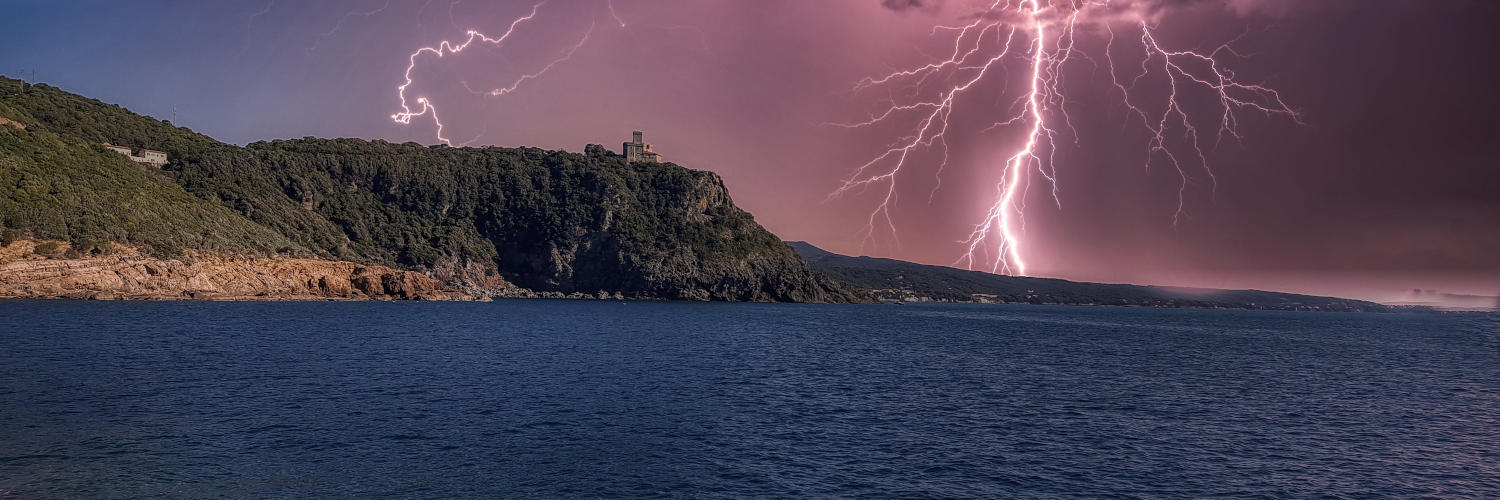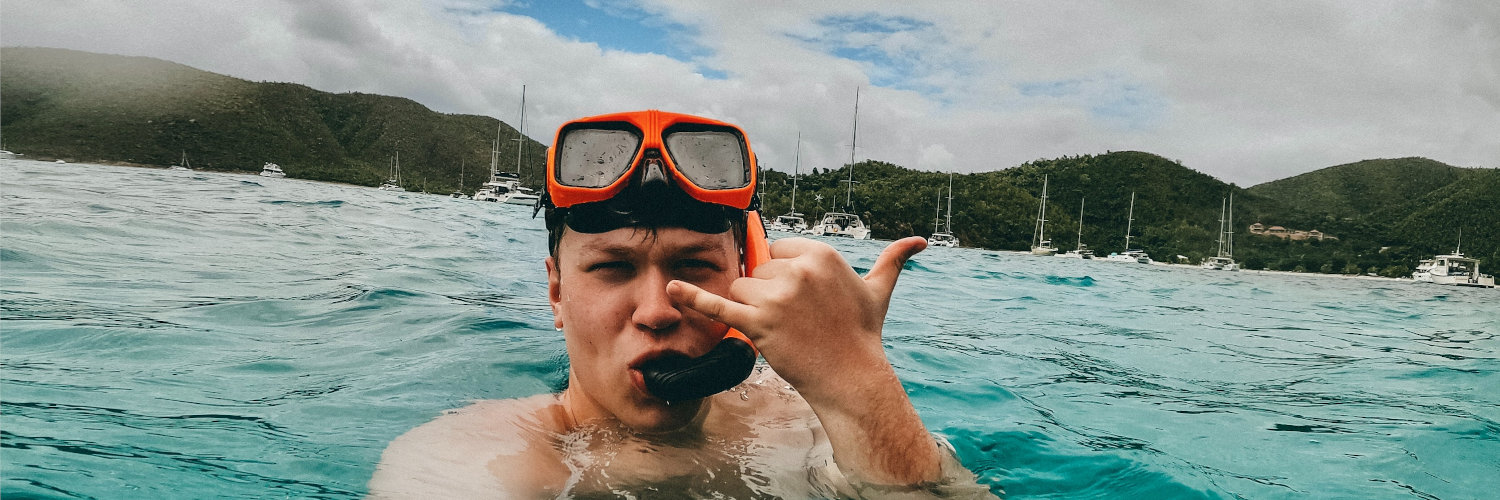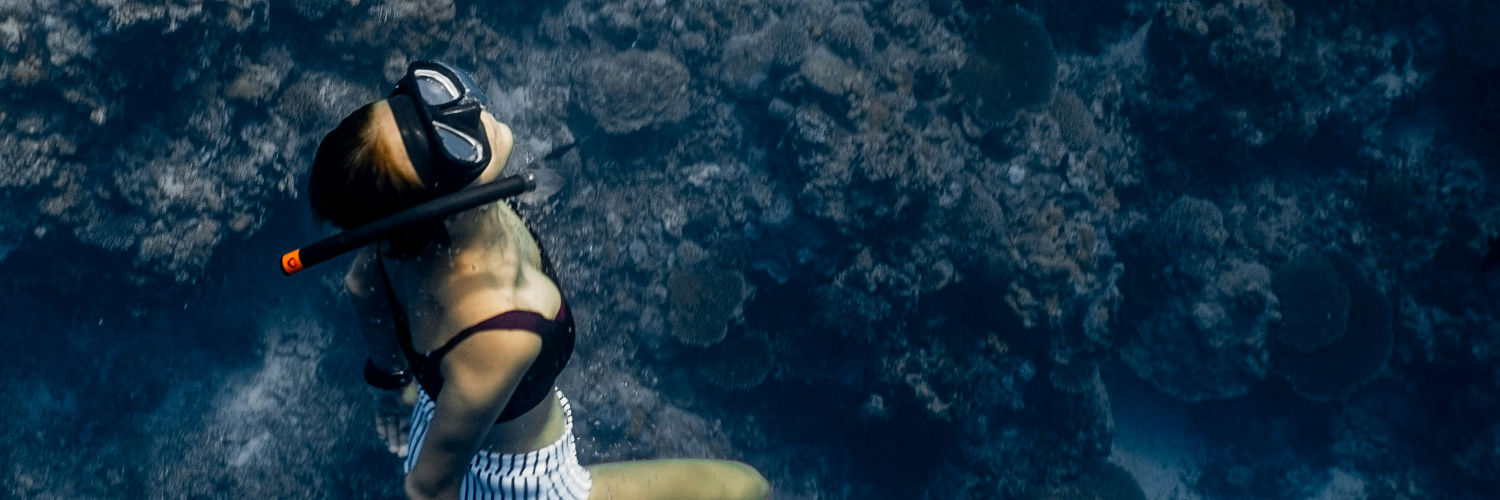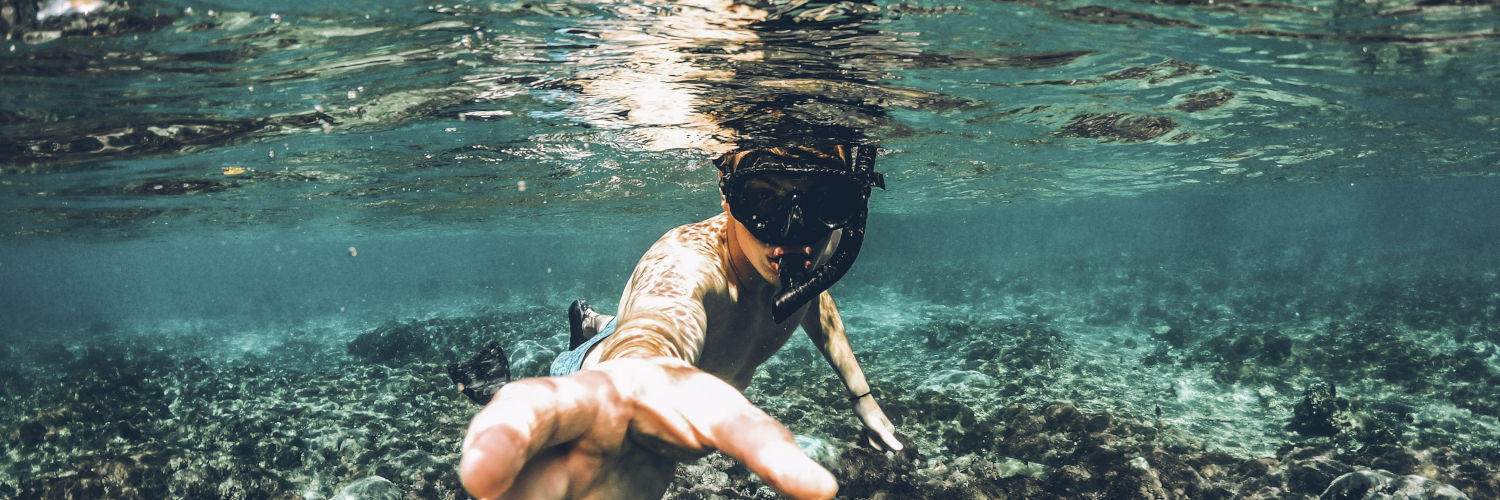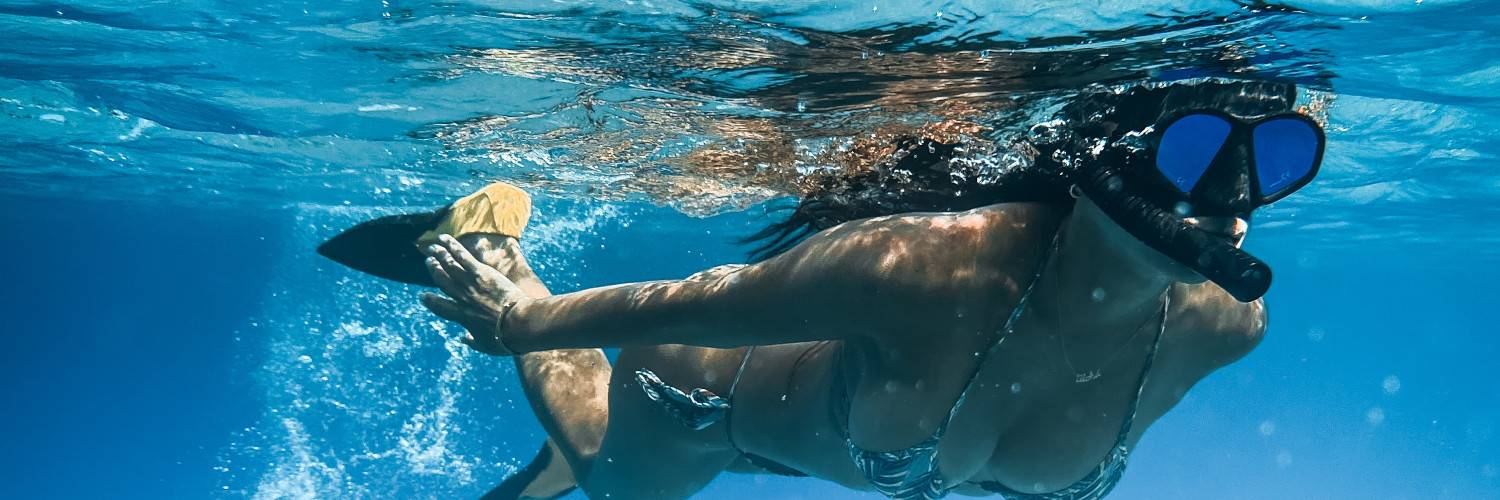Snorkeling During Thunderstorms: Understanding the Risks
Snorkeling offers an exceptional way to explore the underwater world, providing an immersive experience with aquatic life. Generally, the activity is most enjoyable and safe under clear skies with sunny conditions that enhance underwater visibility and ensure a comfortable water temperature. Ideal weather also involves calm seas, which is crucial for the safety and enjoyment of snorkelers. Weather predictions help plan snorkeling trips. They give important information on conditions. This helps pick the best day for the adventure.
However, when thunderstorms are predicted, snorkeling becomes an activity fraught with risks. Thunderstorms are dangerous. They make it hard to see, cause rough waters, and lightning strikes and strong currents are dangerous too. These things make it less fun and also unsafe. It is best to not go snorkeling when there is a thunderstorm. The weather can change fast and it can be really risky.
Understanding the dynamics of a thunderstorm is essential for recognizing why it is particularly hazardous for snorkelers. Lightning strikes can be lethal, and the combination of rain and wind can alter sea conditions rapidly, raising the difficulty of swimming and potentially leading to hazardous situations. Seasoned snorkelers and professionals alike stress the importance of avoiding snorkeling during such adverse weather, emphasizing precaution and prioritizing safety above the desire for underwater exploration.
Understanding the Risks of Snorkeling in a Thunderstorm
Weather Conditions: Swimming with a snorkel during a storm makes it very risky. Storms make it hard to see, making it dangerous for swimmers. The risk tolerance for such conditions should be minimal, as safety is compromised.
Lightning Risks: One of the most perilous aspects of snorkeling in a thunderstorm is the threat of lightning strikes. Water is an excellent conductor of electricity, and a lightning strike can be deadly if it occurs nearby.
- Proximity to Shore: In the event of a storm, those further from shore are at a greater risk, as they have a longer distance to swim to safety.
- Surface Contact: Since snorkelers tend to stay at the surface, they are at higher risk during lightning storms, compared to divers who might be deeper underwater.
Visibility Issues: When heavy rain and strong wind come, people who snorkel might have trouble seeing under the water. This makes it easy to get lost and bump into things.
Risk Mitigation: If you think about snorkeling when a storm is coming, think again. It’s important to reconsider and maybe wait for another time. Snorkeling is not worth the danger during severe weather.
In summary, the risks presented by snorkeling in a thunderstorm, due to factors like lightning and poor visibility, should not be underestimated. Those planning aquatic activities should monitor weather conditions to avoid snorkeling during such dangerous weather events.
Weather Conditions and Snorkeling Safety
Snorkeling safety is significantly influenced by weather conditions. Getting the weather right and knowing about the wind, waves, and water movement is really important for safe snorkeling.
Analyzing Weather Forecasts and Storm Warnings
Prior to snorkeling, individuals should consult weather forecasts, paying attention to alerts from reliable sources such as NOAA. Storm warnings indicate that severe weather, such as thunderstorms, are expected, which can drastically increase the risks associated with snorkeling. Lightning poses a serious threat to life, and snorkelers should avoid being in the water during such conditions.
- Important Sources for Weather Information:
- NOAA’s National Weather Service
- Local Coastal Management Authorities
- Windy.com or similar services for localized conditions
Adherence to these forecasts can inform one’s decision to either proceed with or delay a snorkeling activity.
Effects of the Weather on Snorkeling Conditions
The sea acts like the wind says. Big winds make big waves and strong flows. This is hard for good swimmers to face.
- Wind, Waves, and Currents Impact:
- Wind: Affects waves and make it difficult to see
- Waves: Waves may make it hard to see and swim
- Currents: Can may quickly change and move people away from safety.
It’s very important to think about when the tide goes up and down, because it can change how the water moves and the waves at the beach. A snorkeler must be aware of these conditions to ensure they are not caught in a situation that exceeds their abilities or that could lead to exhaustion or injury.
Impact on Marine Environment and Snorkeler’s Experience
Snorkeling in a thunderstorm affects both the marine environment and the experience of the snorkeler. We must think about water and sea life changes.
Visibility and Its Effect Underwater
Water Visibility: Rain, especially during storms, adds lots of dirt to the sea. The dirt makes the water not clear, so you cannot see well. Snorkelers may find it challenging to navigate and appreciate the underwater scenery, as both the distance they can see and the quality of that view are diminished. Dirt in water can hide animals, so it’s hard to see them. They can make it tough to meet fish in the sea.
- Impact on Reefs: When seeing is bad, people snorkeling may accidentally touch the reef, hurting it. Stuff that falls to the bottom of the sea can cover the coral, messing up the small world there.
Marine Life Behavior During Severe Weather
Response to Thunderstorms: When there’s a big storm, fish and other sea creatures may act differently. They might swim deeper to stay away from the commotion, so they don’t meet people swimming. The altered behavior of marine life might not only affect their natural habits but also influence the snorkeler’s experience, who may miss observing the usual aquatic ballet.
- Safety Precautions: During bad weather, safety’s a big worry for people swimming and sea animals. Lightning and fast water changes can be dangers for swimmers. Also, fast changes in the sea can make sea animals feel anxious and they might act in a surprising way or go to new places to stay safe.
Proper Gear and Precautions for Adverse Weather Snorkeling
When snorkeling in adverse weather conditions, such as during a thunderstorm, it’s crucial to have the right gear and take necessary precautions. While snorkeling in these conditions is generally discouraged, here are tips for those who find themselves in unexpected weather shifts.
Protective Clothing:
- A wetsuit keeps you warm and protects from getting too cold in cold waters caused by stormy weather.
- Rash guard, also known as a rashie, provides an additional layer of warmth and protection from the sun and wind.
Snorkeling Essentials:
- A high-quality mask with a silicone seal to prevent water entry.
- A snorkel tube, preferably with a wave guard or dry snorkel design, to reduce water intake during waves or rain.
Safety and Waterproofing:
- A dry bag to protect valuables and electronic devices like a waterproof camera.
- Equip oneself with safety accessories, such as a diving buoy or snorkel vest to maintain buoyancy.
Precautions:
- Avoid metal objects and seek shelter immediately if lightning is present; metal items can increase the risk of a lightning strike.
- Secure items that may be affected by strong winds or waves, ensuring nothing is lost or becomes hazardous debris.
Before engaging in snorkeling activities under such conditions, it is imperative to consult weather forecasts, check for storm warnings, and always prioritize safety over the experience. Only those with expert knowledge and experience should consider snorkeling when a thunderstorm is possible, and even then, extreme caution should be exercised.
Response and Safety Measures in Case of Emergency
In a big storm, swimmers and boat drivers should focus on being safe by knowing when to find shelter and following the rules for leaving. This is very important for staying safe in a storm. The focus should be on immediate reaction to changing weather conditions, particularly the onset of strong winds and lightning.
Emergency Procedures and When to Evacuate
Boats and other watercraft should have clear protocols for evacuation in case of a thunderstorm. The presence of darkening skies, distant thunder, or sudden changes in wind speed is a signal to evacuate. Swimmers should leave the water immediately upon hearing thunder, as this indicates lightning may be close enough to pose a threat.
For Watercrafts:
- Monitor weather updates diligently.
- Develop an evacuation plan prior to departure.
- Ensure all passengers know the location of safety equipment.
For Swimmers and Snorkelers:
- Exit the water at the first sign of thunder.
- Seek shelter in a substantial building or in a fully enclosed, metal-topped vehicle.
Safety Guidelines for Watercraft and Swimmers
In the event of a thunderstorm, reduced visibility due to heavy rain can severely impact a boat’s ability to navigate safely. Watercrafts should be equipped with navigation lights and sound-producing devices. Strong winds and currents can change patterns quickly, and both vessels and swimmers should be wary of these shifts.
For Boats:
- Be aware of water currents and adjust anchoring as necessary.
- Prepare for ingress and egress from the boat safely and swiftly.
For Swimmers:
- Understand and respect the power of water currents; if caught in a current, remain calm and swim parallel to the shore.
- Only swim in designated areas where lifeguards are present for safety reasons.
In both cases, having a means to communicate with emergency services is critical. If someone goes missing or is in distress, contact help immediately.
Alternatives to Snorkeling During Thunderstorms
When thunderstorms are in the forecast, snorkeling should be avoided due to the high risk associated with lightning and turbulent water conditions. These are other options that are just as fun and safe. You can try them out and have a good time while being safe:
- Visit an Aquarium: See sea animals up close in safe place.
- Scuba Diving Lessons: Many dive shops offer indoor pools for beginners to learn scuba diving, which can be a new avenue to experience underwater life without being exposed to the weather.
- Museum or Beach-Side Attractions: Utilize this time to enjoy cultural or beach-related attractions such as maritime museums, which are safe and informative.
- Plan a Snorkeling Tour for a Later Date: Use the day to research and book a snorkeling tour for when the weather is clear and conditions are ideal.
- Indoor Swimming: If one is looking for physical activity, swimming in an indoor pool can be a perfect alternative to maintain fitness without facing outdoor risks.
- Virtual Snorkeling Experience: Technology offers virtual reality experiences that simulate snorkeling locations around the world.
It is important for enthusiasts to consider these alternatives to still enjoy the essence of snorkeling and oceanic beauty without compromising their safety during thunderstorm conditions.
